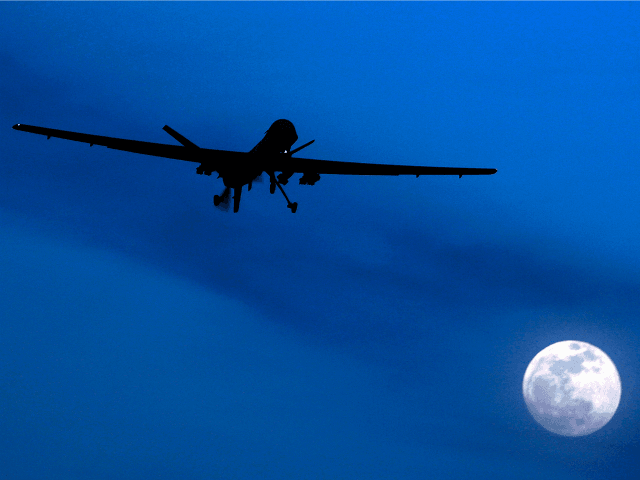A U.S. Army aerial strike on Monday near the capital city of Afghanistan’s western Helmand province, Lashkargah, reportedly killed up to 40 Taliban fighters, the nation’s Khaama Press reported Monday.
The Afghan Ministry of Defense confirmed that the airstrike occurred but did not denote the death count or confirm civilian casualties. Khaama’s undisclosed sources within Lashkargah, however, put the figure at eight civilians dead. The strike comes as the U.S. military prepares to withdraw its remaining personnel from the country by the end of the month.
American forces have launched a flurry of strikes to support the faltering Afghan National Defense and Security Forces (ANDSF) as the latter continues to give ground to the Taliban. U.S. Central Command (CENTCOM) commander Gen. Kenneth F. McKenzie, Jr., has indicated that supportive airstrikes will continue following the U.S. withdrawal but that their launch points would be outside the country, according to Khaama.
The provincial capital is currently the site of heavy fighting between the Taliban and the Afghan government. Lashkargah remains one of the last bastions of government control in the country’s West following a nationwide offensive from the Taliban in anticipation of the U.S. departure. The Taliban have reportedly secured at least two police districts within the city but encountered stiff resistance from the ANDSF, which Kabul has reinforced.
U.S. President Joe Biden announced in April that he would end the American military intervention in the country and withdraw all U.S. troops by September 11, 2021, the 2oth anniversary of the 911 terrorist attacks by al-Qaeda that prompted the initial U.S. invasion. The administration later advanced the withdrawal date to August 31, but even the expedited departure violates the original terms of the agreement that former President Donald Trump negotiated with the Taliban. Under the deal, the U.S. was to leave by May 1 of this year in exchange for the Taliban not attacking U.S. forces in the country.
The Taliban declared Biden’s extension of the withdrawal timeline to be a violation of the deal and loudly repudiated its own commitments before escalating its strikes against the ANDSF in a rapid, and thus far successful, offensive nationwide. Kabul estimated in its latest quarterly report on the peace process, that the Taliban had launched 22,000 attacks in the past four months.
In that time, Taliban insurgents have dramatically redrawn the battle lines, securing most of the country’s West as well as most of the border districts. Major cities have become oases of government control surrounded by hostile countrysides with the security of the land routes connecting them tenuous at best. Herat, Afghanistan’s third-largest city, has come under Taliban assault in recent days, though government forces have thus far repelled all efforts to claim the city for the insurgency. Outside the provincial capital, jihadists have secured numerous critical positions, including border crossings, rendering the city vulnerable.
While both the Taliban and Kabul seem to overestimate the extent of their own control, the Long War Journal (LWJ), an independent operation dedicated to mapping the conflict, has illustrated the Taliban advance. Of Afghanistan’s districts, LWJ puts 223 in firm Taliban control, labels 116 as contested, while conceding Kabul has only 68 securely in its grasp. Last Thursday, those figures stood at 222 for the Taliban, 114 contested, and 71 under government control, indicating modest Taliban gains in recent days. A Taliban delegation to Moscow told Russian authorities in early July that it controlled about “about 250 of Afghanistan’s nearly 400 districts,” a grandiose estimate that is rapidly becoming more realistic.
Continue: Breitbart.com





Leave a Reply